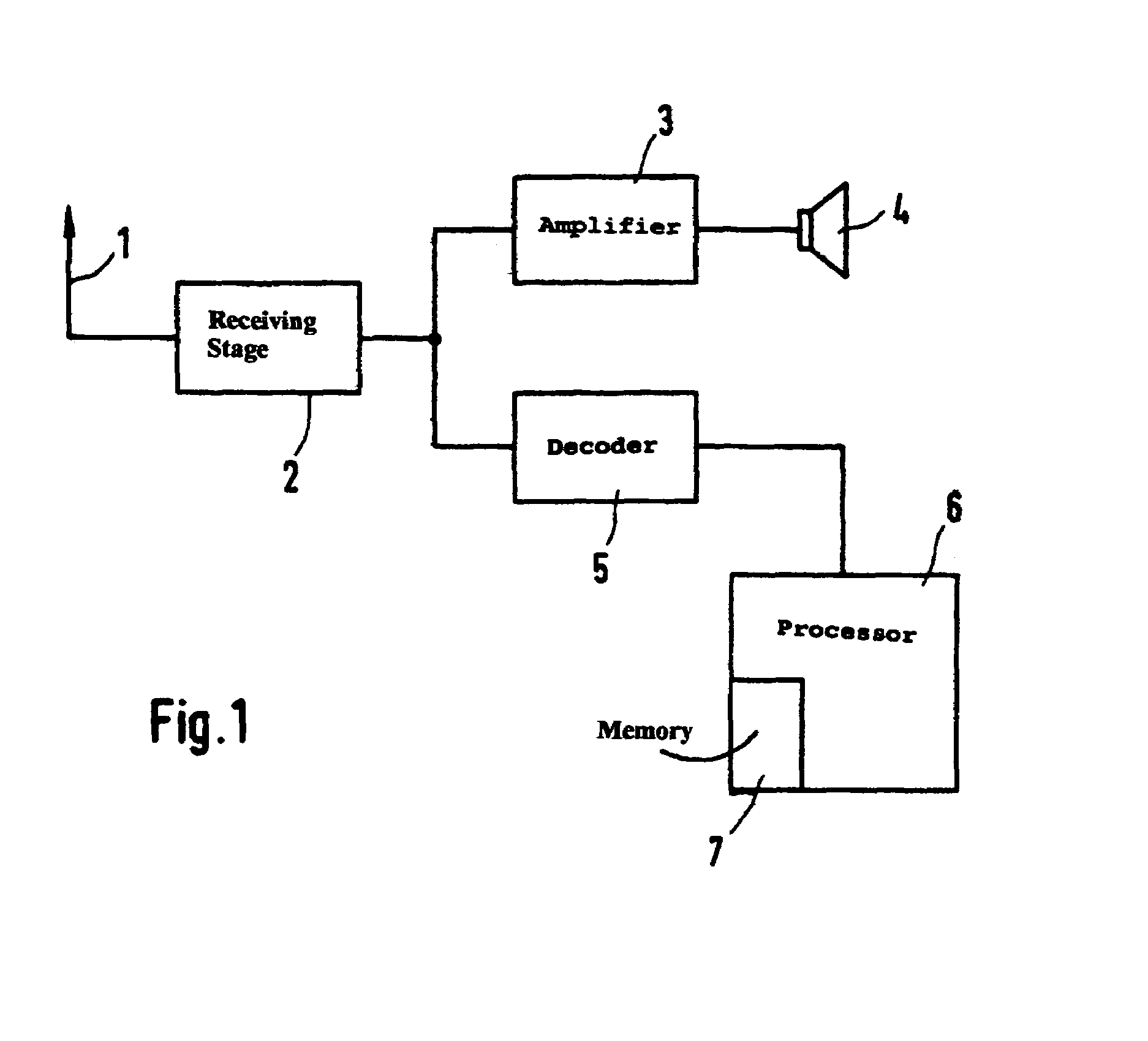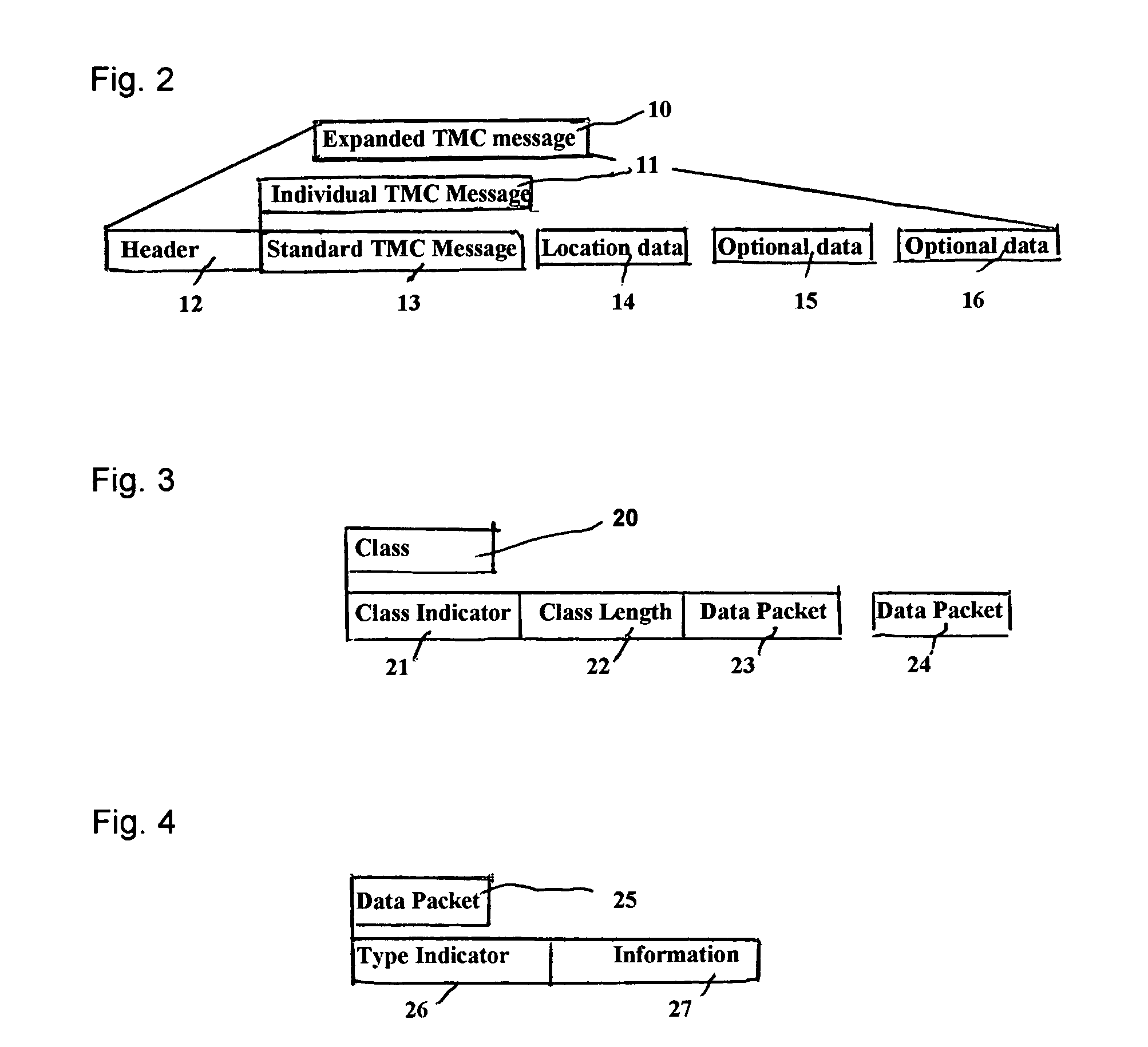Method of transmitting digitally coded traffic information and radio receiver for same
a traffic information and radio receiver technology, applied in the field of transmission of digitally coded traffic information, can solve problems such as irritation of vehicle operators
- Summary
- Abstract
- Description
- Claims
- Application Information
AI Technical Summary
Benefits of technology
Problems solved by technology
Method used
Image
Examples
Embodiment Construction
[0017]FIG. 1 shows a radio receiver, for example a radio receiver with an antenna 1, in which a receiving stage 2 is connected. The decoded received signal is available at the output of the receiving stage 2. Spoken traffic information as well as spoken words and music are broadcast in known FM radio broadcasts. Digitally coded traffic information is also broadcast by means of a radio data system, RDS. The coding is based on a standard format, which was specially developed for the limited data capacity of RDS. The received information is then separated at the output of the receiving stage 2. The spoken words are input into an amplifier stage 3 and made audible to a listener by means of a loud speaker 4. The digitally transmitted data are input to a decoder 5, at whose output a serial signal with so-called TMC data is available. This serial signal is then further processed in the microprocessor 6 and an acoustic or optical signal containing the information in the serial signal is pro...
PUM
 Login to View More
Login to View More Abstract
Description
Claims
Application Information
 Login to View More
Login to View More - R&D
- Intellectual Property
- Life Sciences
- Materials
- Tech Scout
- Unparalleled Data Quality
- Higher Quality Content
- 60% Fewer Hallucinations
Browse by: Latest US Patents, China's latest patents, Technical Efficacy Thesaurus, Application Domain, Technology Topic, Popular Technical Reports.
© 2025 PatSnap. All rights reserved.Legal|Privacy policy|Modern Slavery Act Transparency Statement|Sitemap|About US| Contact US: help@patsnap.com



